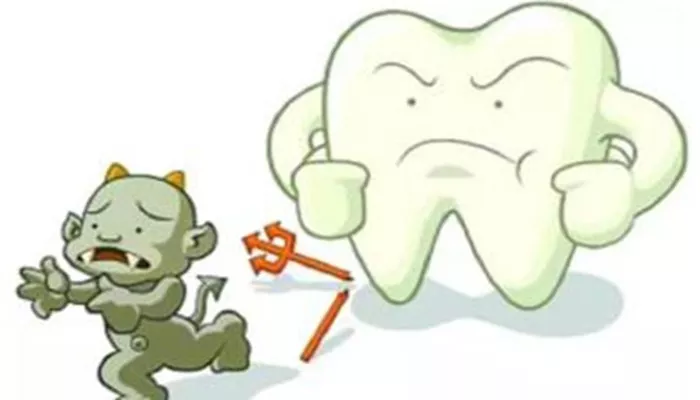Tooth decay, commonly known as dental caries, is one of the most prevalent causes of toothache. This condition occurs when bacteria in the mouth produce acids that erode tooth enamel and dentin, leading to the formation of cavities or holes in the teeth. If left untreated, tooth decay can progress to more severe stages, causing significant pain, infection, and even tooth loss. In this article, we will explore how to deal with toothache caused by tooth decay from a professional dental perspective, using simple sentences and a logical, popular science style.
Understanding Tooth Decay and Its Causes
Tooth decay is a multifactorial disease that results from the interplay of several factors:
Bacteria: Bacteria in dental plaque convert sugars and starches from food into acids.
Diet: Frequent consumption of sugary snacks and drinks provides a constant supply of substrate for bacteria to produce acids.
Saliva: Saliva helps neutralize acids and clean the teeth, but its protective effects can be overwhelmed by frequent acid attacks.
Time: The longer teeth are exposed to acids, the greater the risk of decay.
Tooth Structure: Some people may have teeth that are more susceptible to decay due to inherent weaknesses in enamel.
Symptoms of Tooth Decay
The initial stages of tooth decay may not cause any symptoms. However, as the decay progresses, you may experience:
Sensitivity to Cold and Heat: Teeth with decay may become sensitive to cold and hot foods and drinks.
Pain When Eating or Drinking: You may feel pain or discomfort when consuming sweet, sour, or hot foods and drinks.
Visible Cavities: In severe cases, you may notice dark spots or holes on the teeth.
Spontaneous Pain: If the decay reaches the pulp (the center of the tooth containing nerves and blood vessels), spontaneous, severe pain may occur.
Diagnosis of Tooth Decay
To diagnose tooth decay, a dentist will perform a comprehensive oral examination, which may include:
Visual Inspection: The dentist will look for signs of decay, such as discoloration or cavities.
Dental X-rays: X-rays can help detect decay that is not visible to the naked eye, especially in the early stages.
Dental Probe: The dentist may use a sharp instrument to check for soft spots or cavities in the teeth.
Treatment Options for Tooth Decay
Once tooth decay is diagnosed, it is essential to treat it promptly to prevent further damage and alleviate pain. The treatment options depend on the severity of the decay:
Fluoride Treatments
For early-stage decay, fluoride treatments can help strengthen enamel and reverse mild decay. Fluoride can be applied in the form of gels, varnishes, or toothpaste.
Fillings
Fillings are the most common treatment for moderate decay. The dentist will remove the decayed tissue, clean the affected area, and then fill the cavity with a dental material such as amalgam (silver fillings), composite resin (tooth-colored fillings), or glass ionomer cement.
Amalgam Fillings: These are durable and inexpensive but are not tooth-colored.
Composite Resin Fillings: These are tooth-colored and can be matched to the shade of your teeth, providing a more aesthetic result.
Glass Ionomer Cement Fillings: These are fluoride-releasing, making them suitable for children’s teeth or areas prone to decay.
Crowns
If a tooth has extensive decay or has been weakened by a large filling, a crown may be necessary. A crown covers the entire tooth, restoring its shape, size, and function. Crowns can be made of metal, porcelain fused to metal, all-ceramic, or resin.
Root Canal Treatment
If decay reaches the pulp, causing inflammation or infection, root canal treatment may be required. This involves removing the infected pulp, cleaning and shaping the canal, and then filling and sealing it. A crown is usually placed over the treated tooth to protect it.
Extraction
In some cases, if a tooth is severely decayed or damaged beyond repair, extraction may be the only option. Extraction is followed by either a bridge, implant, or partial denture to restore chewing function and aesthetics.
Pain Management During and After Treatment
Treating tooth decay can sometimes be painful, but there are ways to manage the pain:
Anesthesia: Local anesthesia is used to numb the area around the tooth, making the treatment painless.
Painkillers: Over-the-counter painkillers like ibuprofen or acetaminophen can help manage post-treatment discomfort. Prescription painkillers and antibiotics may be needed if the tooth is infected.
Cold Compresses: Applying a cold compress to the affected area can help reduce swelling and inflammation.
Preventive Measures to Avoid Tooth Decay
The best way to deal with tooth decay is to prevent it from happening in the first place. Here are some preventive measures:
Good Dental Hygiene: Brush your teeth at least twice a day with fluoride toothpaste, and floss daily to remove plaque and food particles stuck between teeth.
Balanced Diet: Limit sugary snacks and drinks, and eat a balanced diet rich in fruits, vegetables, and dairy products.
Regular Dental Check-ups: Visit the dentist every six months for a professional cleaning and check-up. Early detection and treatment of decay can prevent it from progressing.
Fluoride Supplements: If you live in an area with low fluoride in the water, consider using fluoride supplements such as fluoride tablets or drops.
Sealants: Dental sealants can be applied to the chewing surfaces of children’s teeth to protect them from decay.
Conclusion
Tooth decay is a common dental problem that can cause significant pain and discomfort if left untreated. By understanding the causes, symptoms, and treatment options for tooth decay, you can take proactive steps to manage and prevent it.
Regular dental check-ups, good oral hygiene, and a balanced diet are key to maintaining healthy teeth and gums. If you experience toothache caused by tooth decay, visit your dentist promptly for diagnosis and treatment. With early intervention, you can minimize discomfort and preserve your dental health.
Related topics:

